
Gurpreet Korotana
3rd year, Art Education Specialization
Schoolbus Memories: An Invitation to Explore Self and Place
Lesson Plan
This lesson plan—entitled Schoolbus Memories—is part of a larger unit focused on helping Grades 5 and 6 students develop their imagination and explore their sense of self through drawing, discussion and collective collage. The central requirement is that students draw on a first-hand experience, then shape it using their imagination and artistic tools. The task of making images based on their morning trip to school not only allows students to reflect on their surroundings and external environment, but may be a place to consider their presence and belonging in that environment. I taught this lesson to a mixed-grade class of 16 students, half grade 5 and the other half grade 6 at an English elementary school in Montreal during Fall 2016 as part of an internship for my undergraduate degree in Art Education at Concordia. I was thrilled to see that students were engaged in collaborating with each other respectfully, as they were eager to align the quality and integrity of their visuals alongside those of their peers. I say integrity since the visuals produced by the students were intensely meaningful to them—and that’s a big part of what made this lesson work.
Teacher Belief
The imagination is a vital part of ourselves, guiding our thinking while allowing deeper access to complex aspects of life. Sorting through the multiple fertile images and ideas found in our imagination is one way that individual character reinforcement happens. Through the processes of art-making, students make choices about which aspects of their memories and identities could lead to the imaginative construction of an artwork. The resulting image can express in depth what we won’t or can’t necessarily express in words.
At the same time, ideas of the self and belonging are central to this lesson and larger unit plan. As students share their perspectives and created visuals, they get to see different points of view on the same subject. Students get to see multiple understandings of the self based on introspective inquiry. An important factor throughout the whole unit plan is that students are not seated alone; they are seated in groups or next to one another. This enables them to look over at the progress of their peers, learning from them and helping each other, as well. In simple terms, students share ideas in a carefully cultivated safe learning environment. Having the students reflect on their time travelling to school can be a place where visual memories become vivid, and the experience of the self emerges.
Preparation for Class
Questions of inquiry: What did you see on your way to school, and what would you change, add or modify? How could you bring your memories together in a “collage” work of art?
Materials:
Pencils, coloring pencils, markers, glue, scissors, 2ft x 3ft sheet of bristol for each group, 3 sheets of letter size paper per student, 4 sandwich bags.
Visual Arts Vocabulary:
Collage: different images or parts of images that are combined together to create a new visual. Composition: the structure of the artwork; where elements are selectively placed and/or drawn. Layers: parts of different images stacked on top of each other.
Personal and Social Vocabulary:
Self: the sense of a distinct and stable identity, separate from the external world and other people, yet formed in relation to these.
Identity: how people see themselves and express ‘who they are inside’ to other people; related to ways of belonging; categories and characteristics that makes us who we are; may be collective or individual.
Activity Script:
Introduction (15 min): Today’s art session will be about memories – recent memories. Before we get into it, let me ask you: “What did you see on your way to school?” Take a few moments to reflect and list anything you remember. Next question: “What would you change, add or modify?” We will discuss this together as a group. Next, imagine exaggerating particular elements of the scene: “You remembered seeing a bird? What kind of bird? How could it be different? Imagine changing or exaggerating any element of this bird. (5 minutes) Now, think about everything you saw today on your way to school. How did you get to school? How was the weather? Who did you see? What buildings did you pass? Was the road bumpy or smooth? What sounds did you hear? What else did you notice? How did you feel? Keep a list of these details. (5 minutes)
Prototype and Demonstration (10 min): Show the prototype artwork and memory collage. Explain what collage is and what it looks like, introducing the visual arts concepts (above).
Work Time (40 minutes): In groups of four, and working from the lists they generated above, have students draw their memories. When they are done, have students cut out their favourite elements (30 min). With their group, assemble the cut-out drawings on a large piece of cardboard without gluing them down. Together, move around the different pieces, experimenting with composition. Prompt students to explain or tell stories about their images. Finally, invite each group to glue down specific pieces to form a collage (10 min). They may add or modify through drawing, as well. Remember, this is team-work. Help students collaborate on the kind of artwork that will be made.
Reflection:
Despite having a restricted amount of time to teach this lesson, I noticed that students from grades 5 and 6 were able to grasp the notion of layering and exaggerating certain elements of their visuals (huge wings of a bird, for example). They got creative with the attempt to create certain 3d (pop-out) collage elements and experimenting with placement at the edge of the frame.
One way to improve this lesson might be to focus on a pre-session activity of “exaggerated drawings.” This session could introduce “caricature” drawings, as seen in newspapers and from other artists in order for them to develop and understand the visuals of exaggeration. I believe this pre-session could reinforce the students’ critical and imaginative thinking.
What could further enhance the notion of collaborative artwork in relation to the aspect of a “sense of belonging” is to have another pre-session activity where students get to speak in front of the class about what they recently saw by acting out (performing) an expressive reaction to what they saw. If they saw a bird, the student may have imagined it to be majestic with huge wings: the student could act this out in class by gazing towards the ceiling in awe. Here, the students in class get to see the same scene as the performer. The use of physical gesture can help to loosen up thinking and social processes. The whole class is within the dynamics of belonging in the learning environment.
Figures:

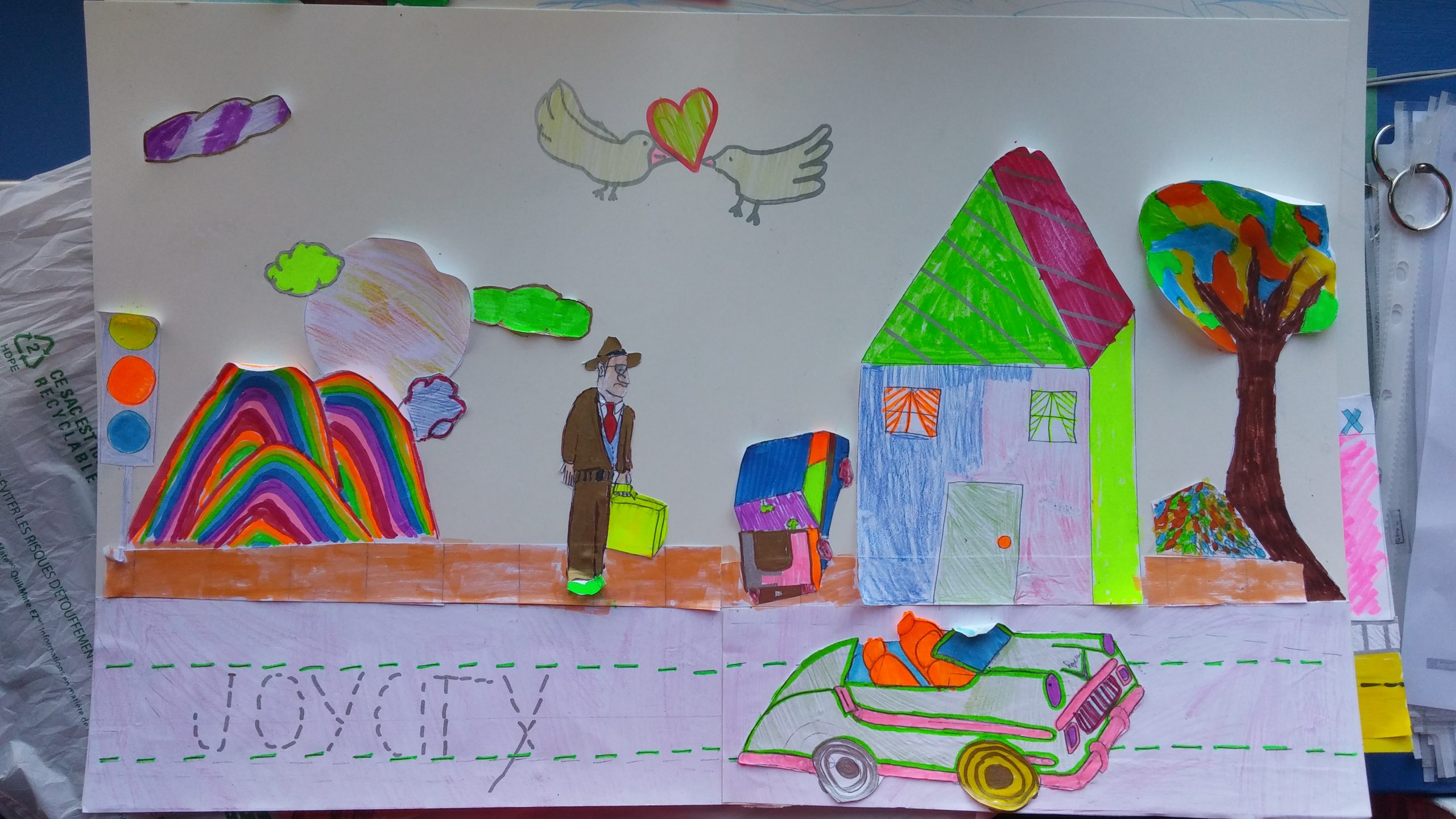
Marion Miller and Rana Jreidini
3rd year, Art Education Specialization
3rd year, Art Education Major
After Québec City
On January 29th, six beloved members of the community lost their lives at the hands of a shooter attacking a Quebec City Mosque. Here, two art education students from Concordia University reflect on how horrific events like these come into the classroom:
Marion
After Quebec City, more than ever, the classroom and the community cannot be neutral. They become spaces of grief, political spaces, spaces where the educational mission must extend beyond the immediate goals of the art curriculum, and into the sphere of human values and the larger community.
After Pulse Nightclub in Orlando, last summer, I didn’t know how to react. I spent two weeks watching my internet networks explode with grief and fear over that action. I felt numb the entire time. I realized that I don’t know anything at all about being latinx queer in Florida. I was supposed to feel affected as a queer person but felt I had no context or lens through which to express that grief.
After Quebec City, I immediately felt shocked, upset, hurt. For though I am not part of the Muslim community, I am part of this society whose racism and islamophobia I have seen first hand. Watching thousands gather at the Parc Metro in Montreal, to stand together in solidarity with Muslim Quebecers, was a powerful moment of connection for me. Can our classrooms function in a similar way?
After Quebec City, I’ve been thinking a lot about my role as art educator in the art classroom. As a white person born in Canada, what must I be conscious of in this moment of anti-immigrant sentiment? I think back to the community internship I did last year, in which Rana and I chose to act as ‘hosts,’ facilitating art activities for kids aged 6 to 12, while essentially being ‘guests,’ visitors to a space not of our making but of the children’s making. As a non-Arabic speaker working amongst a predominantly Arabic-speaking community, I could not connect as quickly with the youth as could Rana, and was aware of myself as an outsider to their experience in migrant families. I tried to remain conscious of my privilege and the limits of my own understandings. I see the art classroom as a place for the expression of big emotions, personal stories, and the full range of experiences of the world.
Rana
The attack that occurred at the Centre Culturel Islamique de Québec in Ste-Foy was a shock to all. As an art educator, going into my community internship with adults and seniors the following day in order to teach felt challenging. Everyone was feeling shaken by what had happened, the need to talk was palpable. What unfolded next was an open-ended conversation that allowed us to express our thoughts in a safe environment. Although the planned art lesson was not taught, it was no problem—maybe another form of learning was happening. Instead we ended up drawing freely while letting the conversation flow. After public trauma of this order, I think it is important to let people articulate concerns and name issues.
Thinking back to last year’s community internship held as part of my undergraduate degree, Marion and I were in a diverse cultural setting focused on children’s art. Half of our students were Muslim and recent immigrants from Arab countries. What could we have done to explain the actions that had occurred? Is explanation possible or even our role? As an art educator, I feel it’s important not to shy away from conflict and difficult subjects. Art activities offer a way to practice making, thinking and feeling together—with the aim of self-expression and shared understanding. Such things are never more important than in dangerous political times.
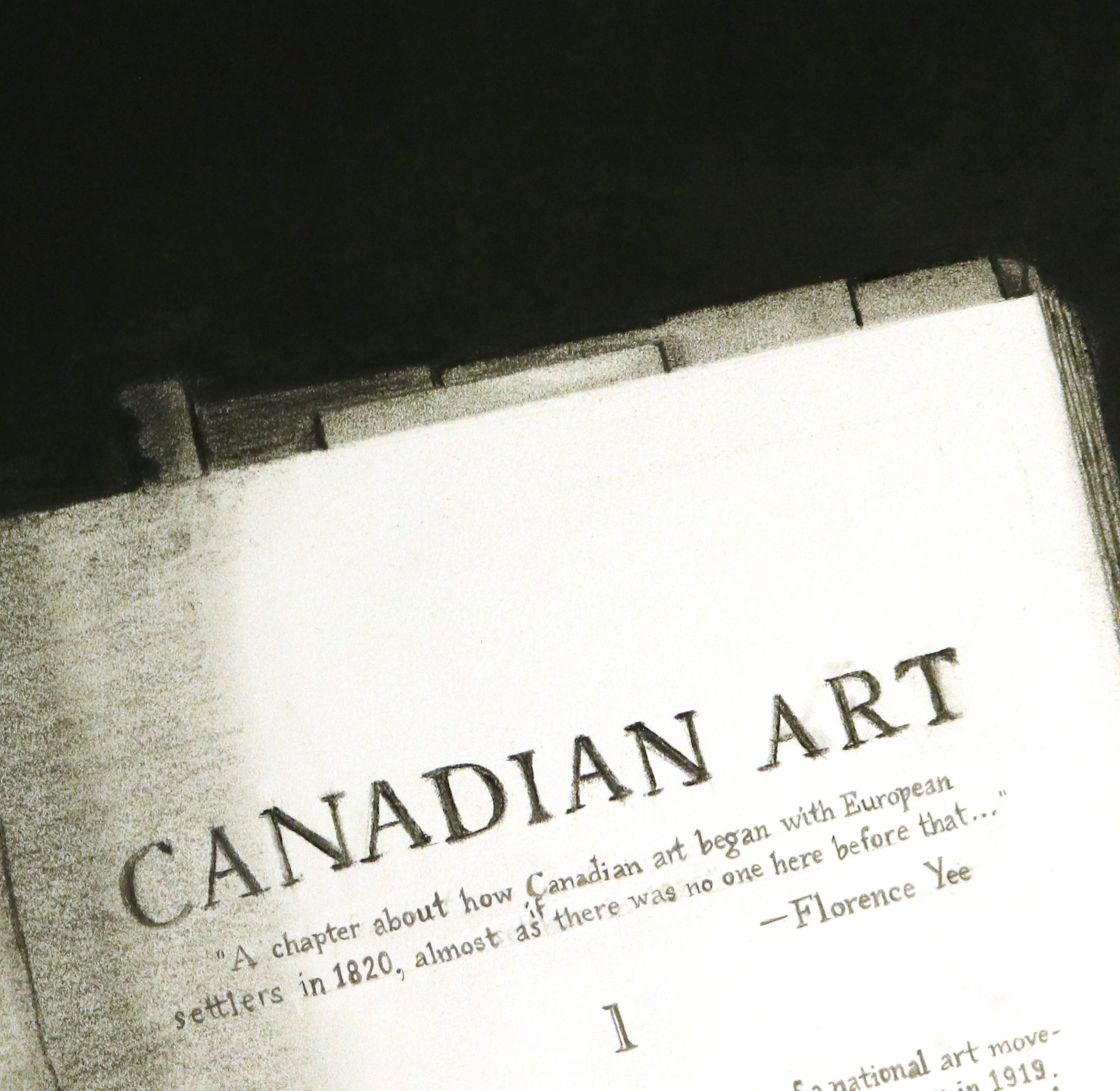
Florence Yee
2nd year, Painting and Drawing
A History of Art History Through Cultural Reproduction
15” x 22” charcoal and graphite on paper
2016
As cultural reproductions of Canadian art, art history textbooks can shape our conception of the country, of marginalized groups and how they do or don’t belong in Canada. In the past, undergraduate history texts have relied heavily on colonial models of understanding—they often only represented Eurocentric ideals. The existence of Aboriginal peoples, women and visible minorities within the history of Canadian art was seldom recognized.
My ongoing series of charcoal and graphite drawings, developed in a residency at the Concordia University Fine Arts Reading Room, resemble photocopies of art history textbooks and catalogues. These fake photocopies, made in my own handwriting and using my imagined revision of earlier texts, aim to push back against historically inaccurate texts. The manual reproductions explore the ways in which we learn and internalize ideas about belonging in Canada. How can we disrupt racist and sexist narratives to promote more inclusive educational programs for all students?

Jacqueline Stendel
3rd year, Art Education Major
Ascension
48” x 72”
oil paint on raw canvas
2016
While sleepwalking, the body controls as the mind recedes. In these steps, made without intent, these steps between consciousness and the unconscious, the body leaves the mind behind to rest and dream of other selves. No longer does the body belong to the mind, and no longer is the mind delimited by its place within the human form. The self becomes many, and the multiple universes proposed in a dream state unfold. This painting, which emerges from my experience of sleepwalking and dreaming, imagines a scene in which I find myself in this place of fragmentation. Losing my sense of belonging to my body, I separate in the dark hours of the night and become many.


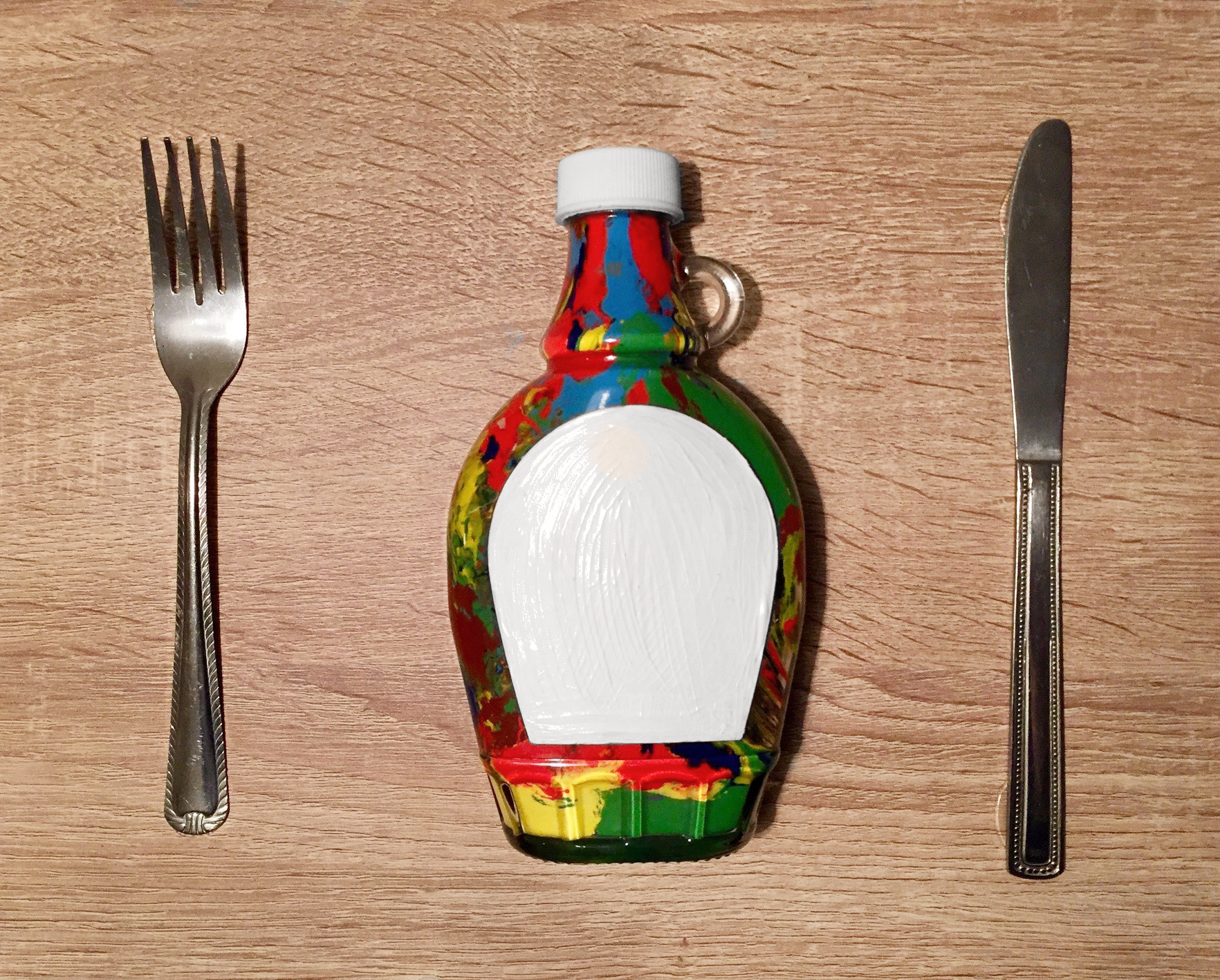
Heather Steinhagen
3rd year, Art Education Major
GTS MTL, Untitled and Conversations
GTS MTL, Untitled and Conversations are part of a series of visual representations depicting my research and reflecting my experience teaching art for the International Student Office at Concordia University. Part of a journal I kept while taking a course in community art education, the three works aimed to examine my role as a teacher. Focusing primarily on introducing technique and on Canadian art, the class became a place to meet and connect; belonging played a role in developing a creative learning space.
GTS MTL
Painting with acrylic on cardboard, I made GTS MTL (Greetings Montreal) as the first journal entry at the first workshop. Reflecting a sense of nervousness through controlled rendering, I painted this to find a bridge between myself as teacher and the students attending the workshop: we were all students, living in Montreal and seeking to create art.
Untitled
I was thrilled at how easy it was to build a community of artists. Or maybe I mean to say that making work somehow pulled us together and made it seem easy. Working alongside each other on various projects, and sharing conversation about the how, what and why of making images, seemed to build a shared knowledge and comfort between students, my teaching partner and myself. There was a wide range of abilities and reasons for students to attend. I noticed an overall ease that crept into being together, which developed over time and in practice.
Conversations
For international students, away from home for the purposes of study, a sense of belonging can sometimes be elusive. I created Conversations in response to the quality of dialogue developing during the art making process. I felt this dialogue mirrored the casual conversations around the dining table at home. The art table had become the new dinner table. Not only did workshop participants demonstrate a natural inclination towards creativity, art proved to be the bridge to bring people together. In ensemble acts of doing and showing and speaking, the participants displayed a sense of connectivity and belonging—starting from the powerful need to express and create.
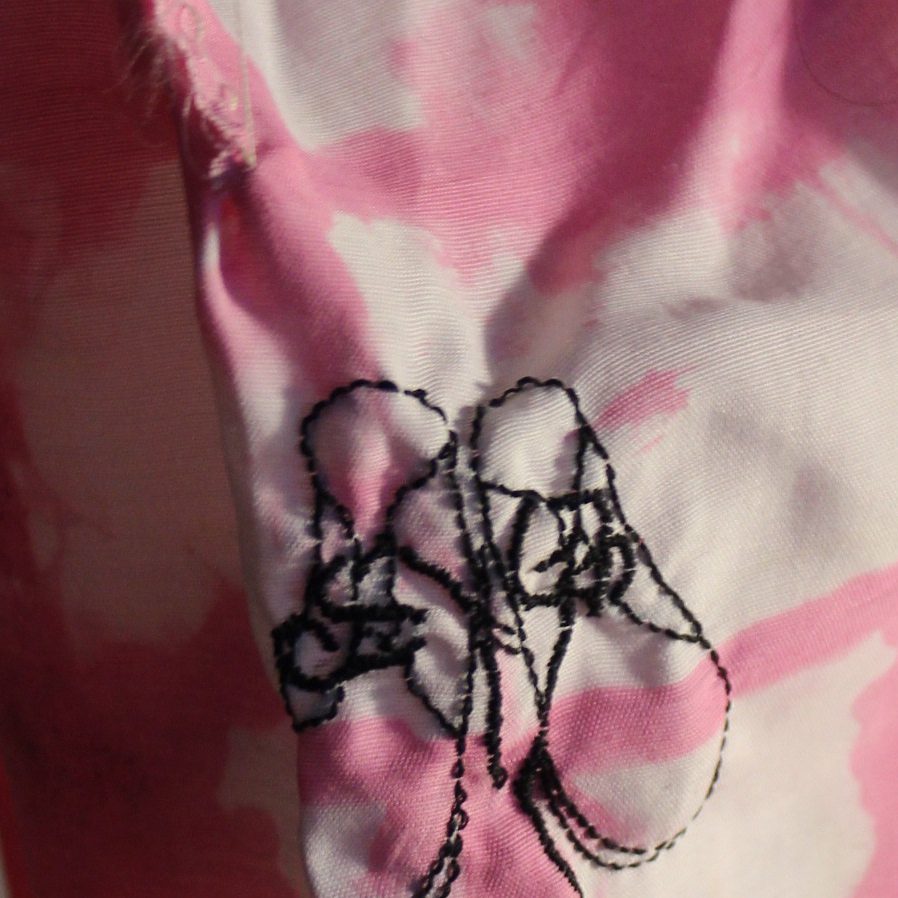
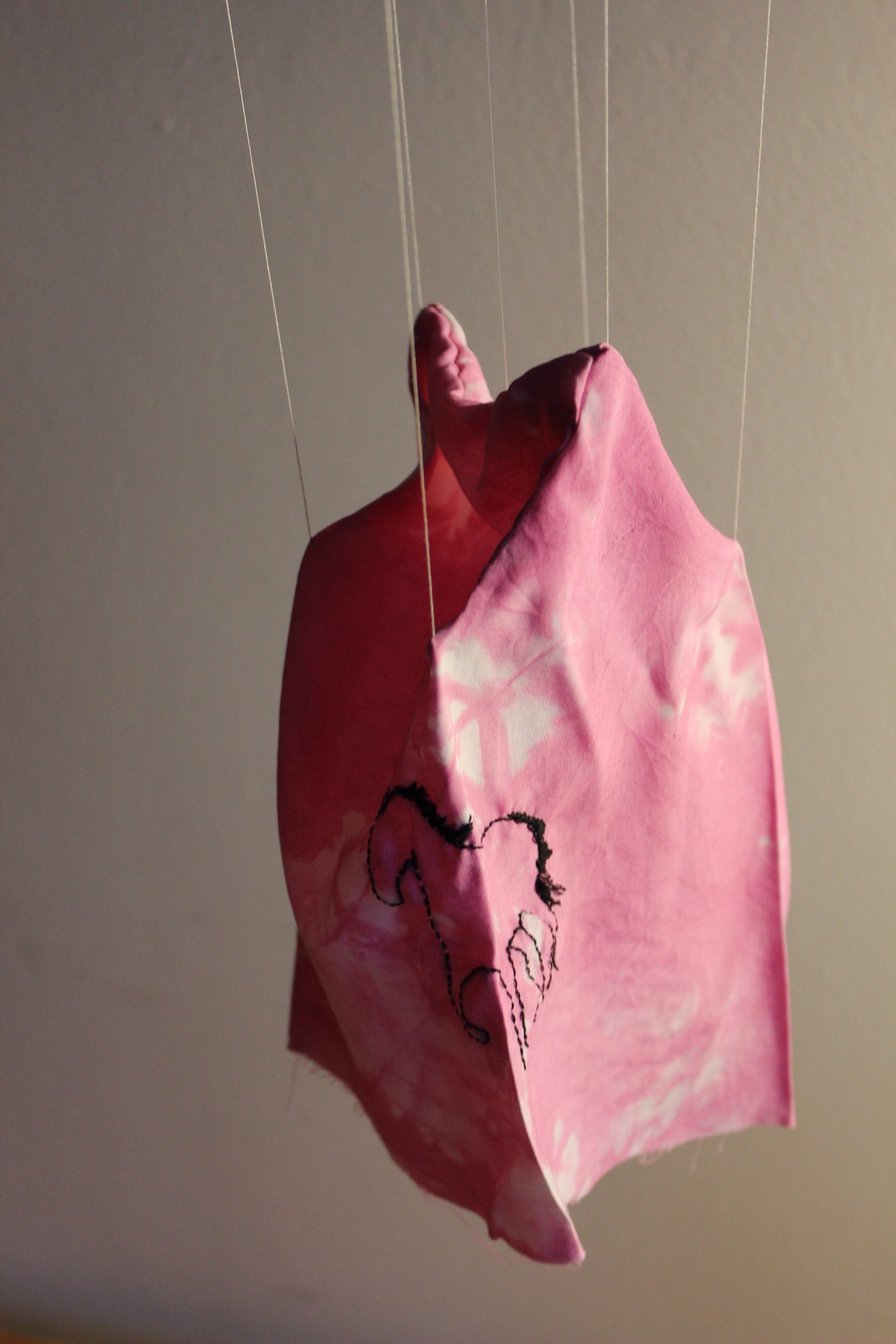
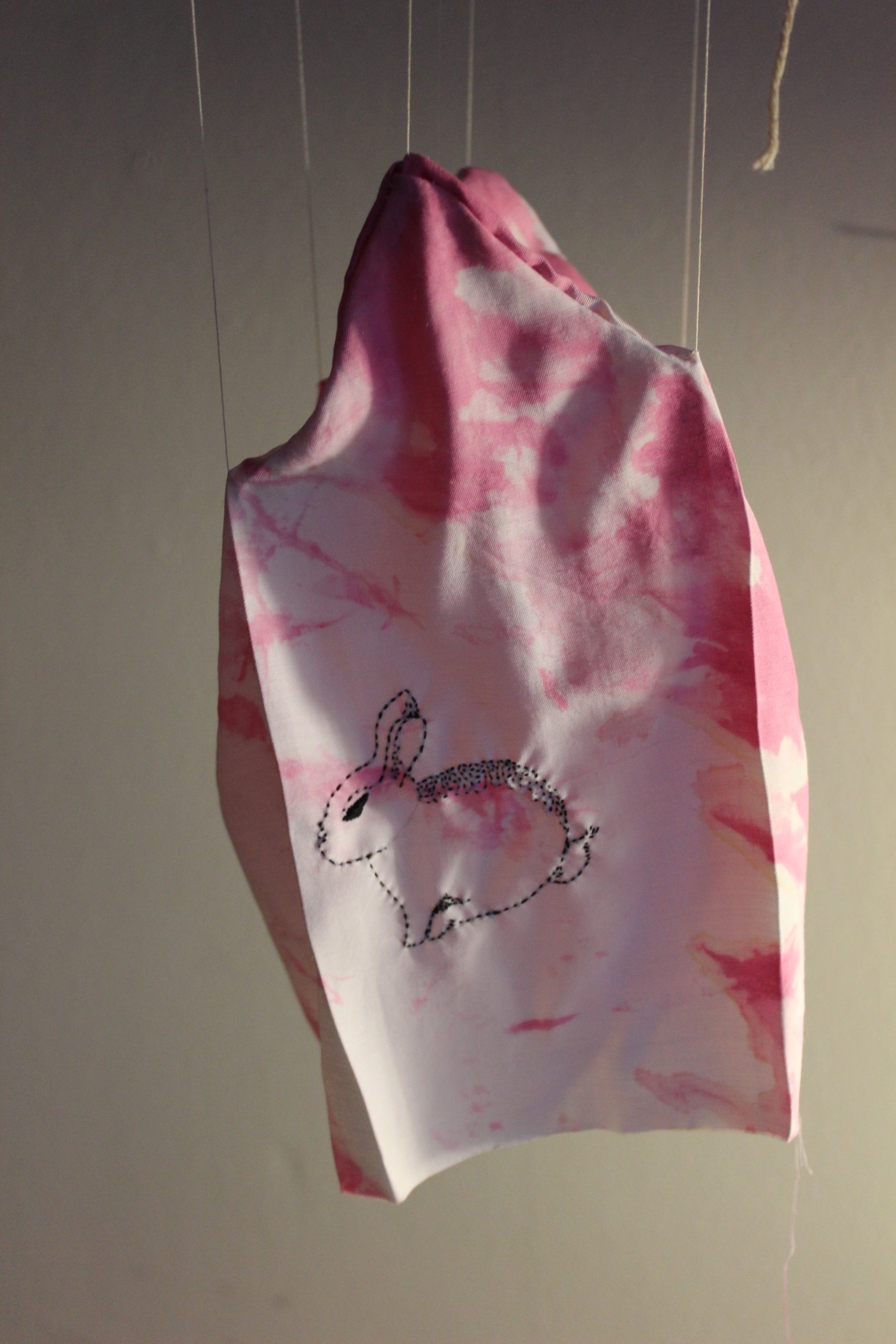
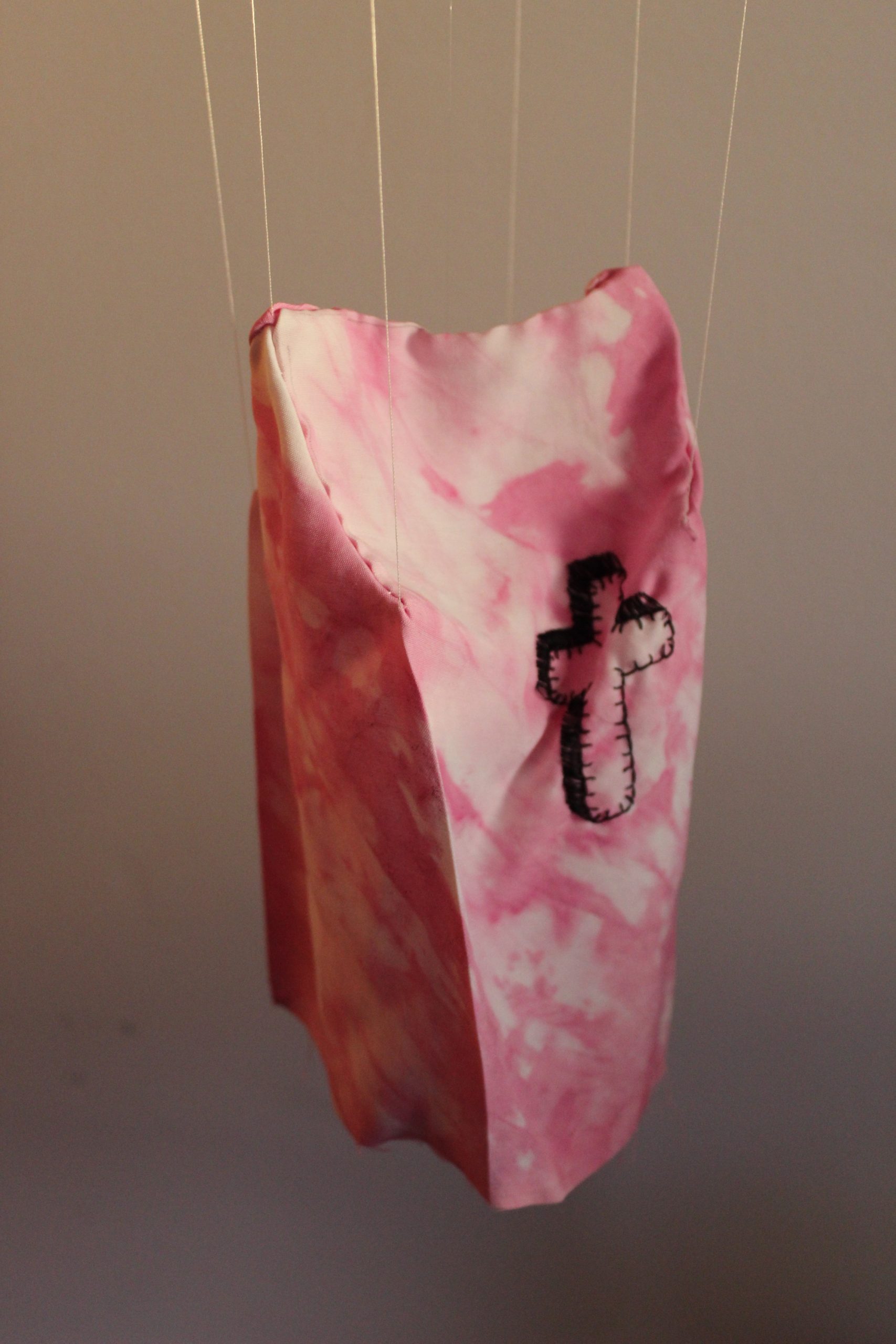
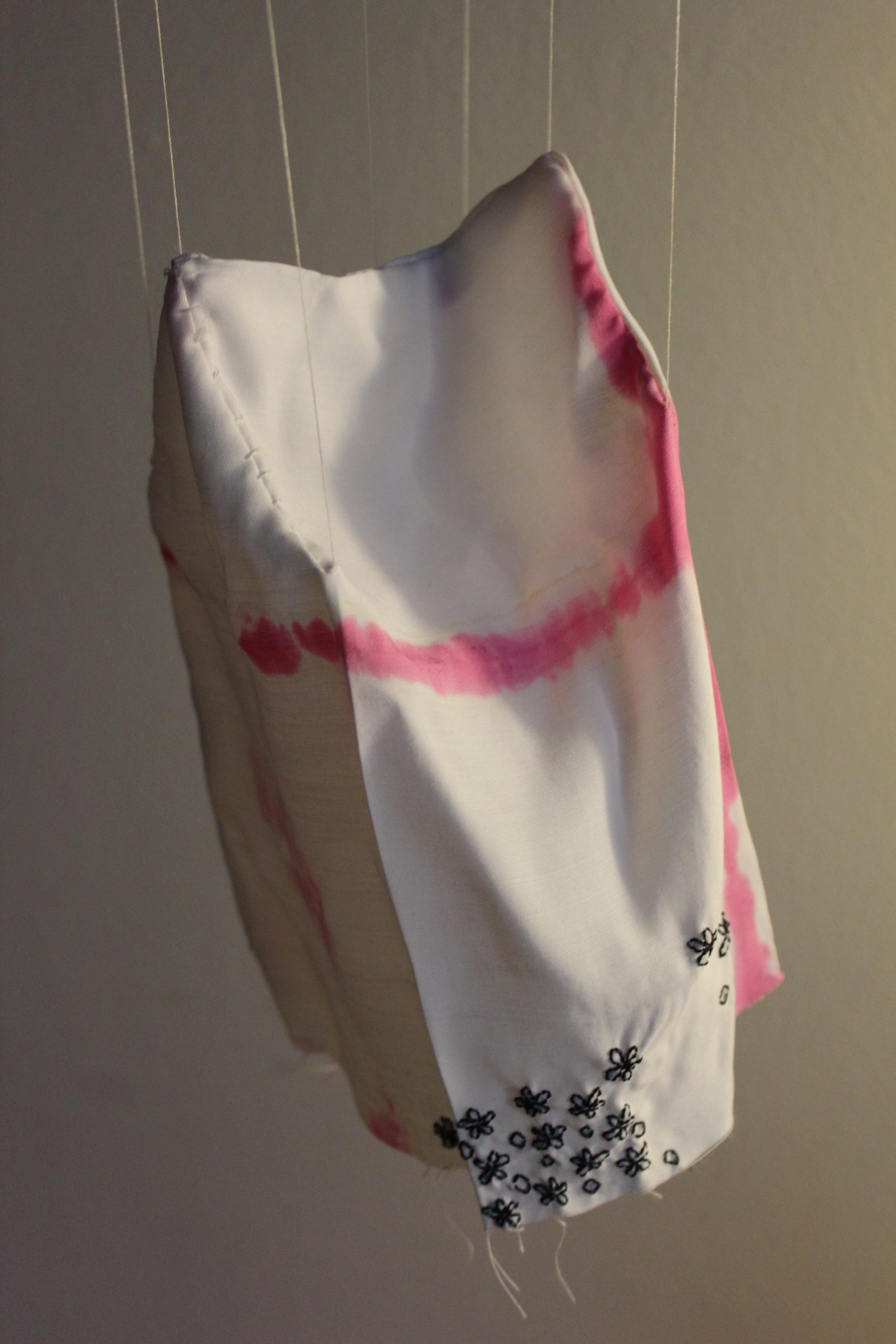
Véronique Chassé
2nd year, Art Education Major
Dwelling
3.5” x 7” x 3.5” individual house
48” x 48” x 48” installation
fabric, thread, wire, foam board and fabric dye
2016
I served as a community art educator at the St-James Drop-In Centre from September to April in downtown Montreal. At this site, and in tandem with my undergraduate program in art education at Concordia University, I worked with adult participants of different backgrounds who are marginalized members of the community, some of whom were themselves practicing artists. When facilitating art classes with vulnerable populations, art educators have to devise new strategies and sensitivities and think outside the box. And, yes, they need to come up with relevant and exciting lesson ideas too.
My unit plan for St-James focused on decorative art forms and how they can be applied to meaningful contemporary artworks. Reflecting on this teaching experience for the course outcome, I wanted to build on our work together to incorporate various materials and techniques in an installation piece that would draw in the audience. I wanted to take on the question of community building to reflect on how participants and educators can share powerful ideas, experiences and emotions to create a new space in which they all belong.
For this piece, I dyed the textile myself using spontaneous gestures to create random patterns; these served as the backdrop for meticulously embroidered images that illustrate specific experiences at St-James. In focusing on symbolic elements taken from conversations, community building and transformative moments, I intended to accentuate their importance. Throughout my practicum, I felt that the relationship building aspect of my experience took precedence over the lessons that were taught, the artworks created and all the factors we try to anticipate and plan as art educators. In my final installation, the suspended houses invite viewers to think of these matters, to spend time walking around the installation and observe the details of the embroidery and fabric dye accentuated by the lights. Each of the houses’ embroidered images represents a particular anecdote, conversation or situation experienced during my practicum.
The Shoes
The pair of shoes references a conversation I had with a member who started coming to the workshops regularly during the semester. In one of our very first conversations, he complimented my boots. This was the beginning of the relationship and the beginning of his active involvement in the workshops. Warm footwear, and access to it, can be taken for granted–his words helped me rethink the concerns at hand and gave me a glimpse of what matters for him. I don’t think it is possible to “walk in someone else’s shoes,” but drawing attention to ordinary things like footwear can help bridge understandings.
The Horse
Horses were a recurring subject of interest for many participants. During the workshops and during their independent practice in the art room, several members would depict horses and other animals as well. Discussing their interest in animals provided a useful shorthand, a way into conversation and to make the workshops accessible. Somehow, animals as subject made the project more open and fun for those who didn’t consider themselves “artsy.”
The Rabbit
In the weeks leading up to Easter, one of the regular participants drew our attention to the rabbit shape hidden in the map of the Hudson Bay. His re/vision of the map reflected for me a unique perspective and ability to use materials and techniques in imaginative ways. Although I had looked at the map numerous times, I had never noticed the rabbit shape–his playful inversion of the image highlighted for me the importance of artmaking as an interpretive act. I was reminded of just how much art educators can learn from the people they work with.
The Cross
Throughout my practicum, members have brought up some delicate issues such as discrimination, religion, mental health, and personal belief. I depicted a cross, like the one on the Mont-Royal summit, to represent religion, one of the most touchy subjects addressed. Trying to build conversation and collaboration within an eclectic group, it was essential to promote a positive dynamic and a comfortable atmosphere for all participants. While freedom of expression was always encouraged, respect for others’ beliefs, opinions and feelings within the space prevailed. The Mont-Royal cross acted as a common point of reference, as a symbol of Montreal, the city we all were living in despite our differences.
The Flowers and Diamonds
As an art educator, I tried to be as prepared and organized as possible but there would always be unexpected occurrences and disruptions. The embroidered flower design appears to be repetitive but becomes increasingly inconsistent as it spreads out. The composition of the flowers also references the inconsistencies in participation from week to week. Some weeks, the sessions were full; other times only two or three participants were present. Attendance was one of many uncontrollable factors that changed from week to week–we wondered, where our fellow artists were? Variables like these could be at times difficult, but I came to see every session of making art together as unique.